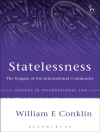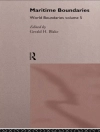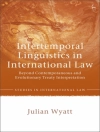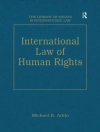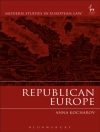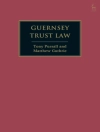European Union Law is written for students on LLB and GDL courses and aims to reflect developments in legal education. The book fully explores the core areas of European Union law, whilst setting them in a contextual and practical framework. Its writing style is accessible to all.
To show how the law applies in reality, key cases are summarised and explained in discrete boxes, and the structure of European Union law is abundantly illustrated with diagrams, tables and other visual aids. At the end of each chapter, summaries enable students to remember the main relevant points, and, to encourage them to engage further with the law, there are suggested reading lists.
New for this edition:
– expanded discussion on the post-Zambrano cases (including Chavez-Vilchez and others of 10 May 2017) on the rights of EU children living with third country nationals;
– explanation of Article 50 TEU and the state of the Brexit negotiations and the EU position up to 22 May 2017;
– new structure presenting the requirements for EU liability;
– inclusion of a discussion on the euro area and its future;
– inclusion of the EU Pilot Scheme regarding enforcement actions by the European Commission;
– inclusion of changes in light of the reform of the CJEU;
– inclusion of Scotch Whisky Association and Others v Lord Advocate case regarding the compatibility of minimum price per unit of alcohol with Article 34 TFEU;
– inclusion of Ålands vindkraft AB v Energimyndigheten case on protection of the environment as a derogation from Article 34 TFEU;
– expanded discussion on the European Citizenship Initiative, including the latest case Minority Safe Pack of 3 February 2017.
विषयसूची
PART I THE FOUNDATIONS OF THE EUROPEAN UNION
1 Creation of the European Community and European Union
1.1 Introduction
1.2 Motives for European integration
1.3 The creation of international (European) organisations
1.4 Widening participation
1.5 Deepening cooperation
1.6 The UK’s attitude towards the European Union
1.7 Further reading
Summary
Test Your Knowledge
2 The Institutional Framework of the European Union
2.1 Introduction
2.2 Democracy and separation of powers within the European Union
2.3 The political institutions of the European Union
2.4 The European Court of Auditors 26
2.5 The Monetary Union institutions: the European Central Bank and the European System of Central Banks
2.6 The Union’s advisory bodies
2.7 Further reading
Summary
Test Your Knowledge
3 Division of Competences between the Union and the Member States
3.1 Introduction
3.2 Powers
3.3 Union competences
3.4 Limits to competences
3.5 Further reading
Summary
Test Your Knowledge
4 The Sources of European Law
4.1 Introduction
4.2 Primary sources
4.3 Secondary sources
4.4 Case law of the Court of Justice of the European Union
4.5 General principles of EU law
4.6 Fundamental rights: the Charter of Fundamental Rights of the European Union and the European Convention on Human Rights
4.7 International agreements
4.8 Further reading
Summary
Test Your Knowledge
5 The Law-making Process in the European Union
5.1 Introduction
5.2 The principles of law-making
5.3 The legislative procedures
5.4 The adoption of regulatory acts
5.5 Further reading
Summary
Test Your Knowledge
PART II THE RELATIONSHIP BETWEEN EU LAW AND NATIONAL LAWS
6 The Constitutional Pillars of European Union Law
6.1 Introduction
6.2 Supremacy of EU law
6.3 Direct effect
6.4 Further reading
Summary
Test Your Knowledge
7 The Effectiveness of European Union law
7.1 Introduction
7.2 Enforcement actions against Member States under Articles 258 to 260 TFEU
7.3 Member State liability for breaches of EU law
7.4 Further reading
Summary
Test Your Knowledge
PART III THE EUROPEAN JUDICIARY
8 The Court of Justice of the European Union
8.1 Introduction
8.2 The Court of Justice
8.3 The General Court
8.4 Specialised courts
8.5 Methods of interpretation
8.6 The CJEU as a constitutional court and judicial activism
8.7 Further reading
Summary
Test Your Knowledge
9 Preliminary Ruling Procedure on Interpretation and Validity
9.1 Introduction
9.2 Jurisdiction of the Court of Justice of the European Union and division of tasks
9.3 Which ‘national court or tribunal’ can make a reference?
9.4 Obligation and discretion to refer
9.5 Can the Court of Justice of the European Union refuse to hear a preliminary reference?
9.6 The special preliminary ruling procedures
9.7 The effects of the ruling of the Court of Justice of the European Union
9.8 Further reading
Summary
Test Your Knowledge
10 Judicial Supervision of European Union Institutions
10.1 Introduction
10.2 Annulment of EU acts
10.3 Failure to act
10.4 Plea of illegality
10.5 Extra-contractual liability
10.6 Further reading
Summary
Test Your Knowledge
PART IV TRADE WITHIN THE INTERNAL MARKET
11 The Internal Market and Harmonisation
11.1 Introduction
11.2 From the common market to the internal market
11.3 Harmonisation
11.4 Further reading
Summary
Test Your Knowledge
12 The Free Movement of Goods: The Customs Union and the Abolition of Tariff Barriers
12.1 Introduction
12.2 The Customs Union
12.3 The definition of ‘goods’
12.4 The elimination of tariff barriers
12.5 Further reading
Summary
Test Your Knowledge
13 The Free Movement of Goods: The Abolition of Non-tariff Barriers
13.1 Introduction
13.2 The prohibition of physical and technical barriers
13.3 Further reading
Summary
Test Your Knowledge
14 The Free Movement of Goods: Derogations and Justifications
14.1 Introduction
14.2 Treaty derogations
14.3 Justifications in the case law of the Court of Justice
14.4 Further reading
Summary
Test Your Knowledge
15 Freedom to Exercise an Economic Activity
15.1 Introduction
15.2 Free movement of workers
15.3 Freedom of establishment and freedom to provide services
15.4 The principle of non-discrimination
15.5 Mutual recognition of professional qualifications
15.6 Activities falling outside the scope of those freedoms
15.7 Further reading
Summary
Test Your Knowledge
PART V COMPETITION LAW
16 Core Concepts of Competition Law
16.1 Introduction
16.2 The concept of ‘undertaking’
16.3 Market definition
16.4 The concept of ‘effect on trade between the Member States’
16.5 Further reading
Summary
Test Your Knowledge
17 Substantive Competition Rules Applicable to Undertakings
17.1 Introduction
17.2 Control of horizontal and vertical restraints under Article 101 TFEU
17.3 Abuse of dominant position
17.4 Concentrations
17.5 Further Reading
Summary
Test Your Knowledge
18 Enforcement of Competition Rules
18.1 Introduction
18.2 The territoriality principle in EU competition law
18.3 Public enforcement of competition rules
18.4 Private enforcement of competition rules
18.5 Further reading
Summary
Test Your Knowledge
PART VI EUROPEAN CITIZENSHIP AND THE FREE MOVEMENT OF EUROPEAN CITIZENS
19 European Citizenship
19.1 Introduction
19.2 From a People’s Europe to European citizenship
19.3 The status of European citizens
19.4 Further reading
Summary
Test Your Knowledge
20 The Free Movement of European Citizens
20.1 Introduction
20.2 Free movement within the area of freedom, security and justice
20.3 European Union migrants and family members’ right to free movement and residence
20.4 Equal treatment rights
20.5 Limits to free movement rights
20.6 Further reading
Summary
Test Your Knowledge
लेखक के बारे में
Noëlle Quénivet is an Associate Professor in International Law and Head of the International Law and Human Rights Unit at the Faculty of Business and Law of the University of the West of England. She teaches European Union Law, Public International Law and International Humanitarian Law.



